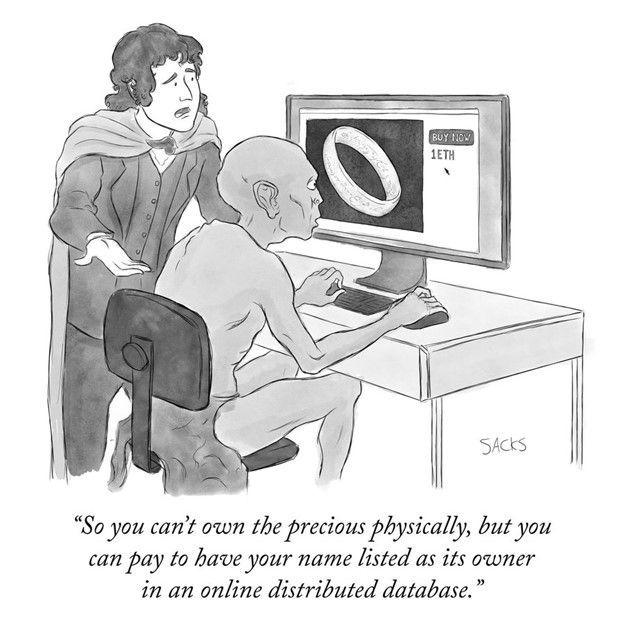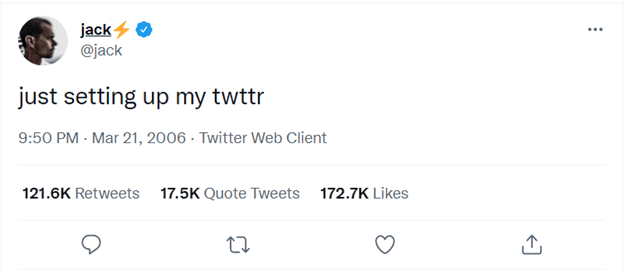Even among cryptocurrency enthusiasts, non-fungible tokens (NFTs) aren't the most well-known or understood piece of the decentralized ledger system. NFTs may seem abstract and difficult to understand, but many applications for these tokens make them essential in the crypto space and beyond. If you're unfamiliar with this type of token, you came to the right place as this post breaks down everything you need to know about NFTs! Give it a read and discover what NFTs are and how they relate to blockchain and cryptocurrency technology.
What are non-fungible tokens (NFTs)?
Blockchain and cryptocurrency are two buzzwords that have been thrown around for a while now. Although NFTs combine both of these emerging technologies, there's still a lot of confusion about what exactly they are. Keep in mind that even though the NFTs are based on the same blockchain technology as cryptocurrencies, they are not a currency. So let’s get right on it and let’s see what Non-Fungible tokens actually are.
The term non-fungible refers to something that another similar object cannot replace i.e they can only ever be replaced by themselves — or not at all. And that is precisely what makes them unique. A non-fungible token (NFT) is a one-of-a-kind digital asset that represents ownership of physical or virtual items such as art, video clips, music, and so on.
Simply put, NFTs are digital proof of ownership for any given item. NFTs are securely recorded on a blockchain — the same technology that lies behind cryptocurrencies — ensuring that the asset is unique. To shed some light on the whole thing, let’s have a look at some of the examples of NFTs.

Examples of NFTs
Cryptokitties, CryptoPunks, Rare Pepes are all examples of non-fungible tokens. NFT was first introduced on the Ethereum blockchain protocol as a concept that allows you to mint and trade virtual assets that are unique, but now many other blockchains like Polygon, Cardano, or Kusama, to name a few, have also their own NFT implementations.
Let’s have a closer look at Cryptokitties, digital cats that have unique genes. Think of them as crypto-collectables. Each is a one-of-a-kind digital asset built on Ethereum's blockchain and entirely owned by you. They can't be replicated, taken away, or destroyed. They can be, however, transferred from one digital wallet to another.
As defined by the Ethereum ERC721 standard, non-fungible tokens like Cryptokitties can be identified via a specific token ID - and only exist once within Ethereum blockchain.
NFTs are today what football cards were back in the day - the latest collectables. While the latter was traded in person, NFTs are easily bought and sold online. Which, in turn, quickly made them a lucrative business. The art world particularly profited from the sale of NFTs. Below are a few examples you probably heard about:
● Beeple, a digital artist, sold the first purely digital work of art called "Everydays—the First 5000 Days" at Christie's for $69.3 million.

● For $2.9 million, Twitter CEO auctioned off an NFT of his first tweet.

● At Sotheby's first curated NFT sale, a CryptoPunk NFT was sold for $1.8 million.

● $208,000 was paid for 20-second footage of LeBron James' "Cosmic Dunk #29."
How do NFTs work?
To understand NFTs, we could look at fungible and non-fungible items from a financial perspective. Today, most people think of cash as fungible—if I give you a $5 bill and you give me back another $5 bill, nothing really changed in terms of value as all the 5$ bills are the same. We don’t care about the dollar bill as a paper-based physical item, we care only about its value. In contrast, collectables and antiques provide value as individual units; these kinds of goods aren't interchangeable with others with similar or even the same features (like dollar bills). Non-fungible tokens work on blockchains like Ethereum, but they are totally different blockchain assets with different features.
How are NFTs used?
There are three main ways NFTs can be used: as collectables, for identity, and ownership.
Collectibles are non-fungible assets that can be owned and traded on NFT marketplaces.
Identity refers to non-fungible personal information about an individual or business, such as educational history or employment background.
Ownership refers to the possession of a physical or digital asset represented by an NFT. By trading NFT you’re actually transferring ownership of those assets. This could include things like real estate, art, intellectual property, etc.
As time goes on, we will likely see many more creative uses for digital NFTs.
Difference between cryptocurrency and NFTs
Cryptocurrencies and NFTs both rely on the same blockchain technology. As a result, NFT markets may also compel customers to use cryptocurrencies to acquire NFTs. Cryptocurrencies aspire to function as currencies by holding value or allowing you to purchase and sell items. Cryptocurrency tokens are fungible, and comparable to conventional currencies like the US dollar. On the flip side, NFTs are tailored to generate one-of-a-kind tokens that may be used to demonstrate ownership and communicate rights over digital products.
Online exchange and marketplaces to buy NFTs
OpenSea and Nifty Gateway are widely known marketplaces to trade NFTs. With a user base of close to 2 million accounts on OpenSea, it is by far one of the biggest marketplaces for NFTs at the moment.
Foundation: Foundation happens to be an NFTs marketplace, and in order to join the platform, a user must be invited by another user who is already a member.
Nifty Gateway: This is an art-focused NFTs marketplace that works with athletes, brands, and creators.
OpenSea: When you want to mention one of the largest marketplaces for a wide range of NFTs collectables, you can think about OpenSea.
Rarible: If you're looking for an art-focused NFTs platform, Rarible is an ideal choice that rewards members with its own token - RARI.
Key takeaways
When you think of cryptocurrencies, your mind surely jumps to Bitcoin and other alt-coins. But blockchain is more than just digital currencies; it's a protocol for creating unique data sets within a network that are time-stamped, cryptographically secured, and immutable. In other words, it is also about taking physical assets—diamonds, Picassos, gold, and digital assets like artwork and turning all of them into non-fungible tokens (NFTs). NFTs can be stored on an Ethereum or a number of other public ledgers. Each token would be identified by a unique ID number and tied to everything from value to ownership rights. In the future, the idea is that you'll have NFTs representing everything from your passport, driver's license, game collectables, real estate ownership, you name it! So, is there any reason we shouldn't extend the concept of NFT beyond its borders? We think not! Stay tuned and wait to see what the Suprabit team has been working on.
Web development team
If you like this article, we're sure you'll love these!
Are OpenAI’s Vector Databases Good Enough for Your Needs?
Discover whether OpenAI’s Embeddings API is the right fit for your vector search needs. Compare it with top vector databases like FAISS, Pinecone, Milvus, and Weaviate.
Knowledge Management: Applications for Modern Enterprises
Explore smarter ways to manage knowledge that drive efficiency, innovation, and seamless team collaboration